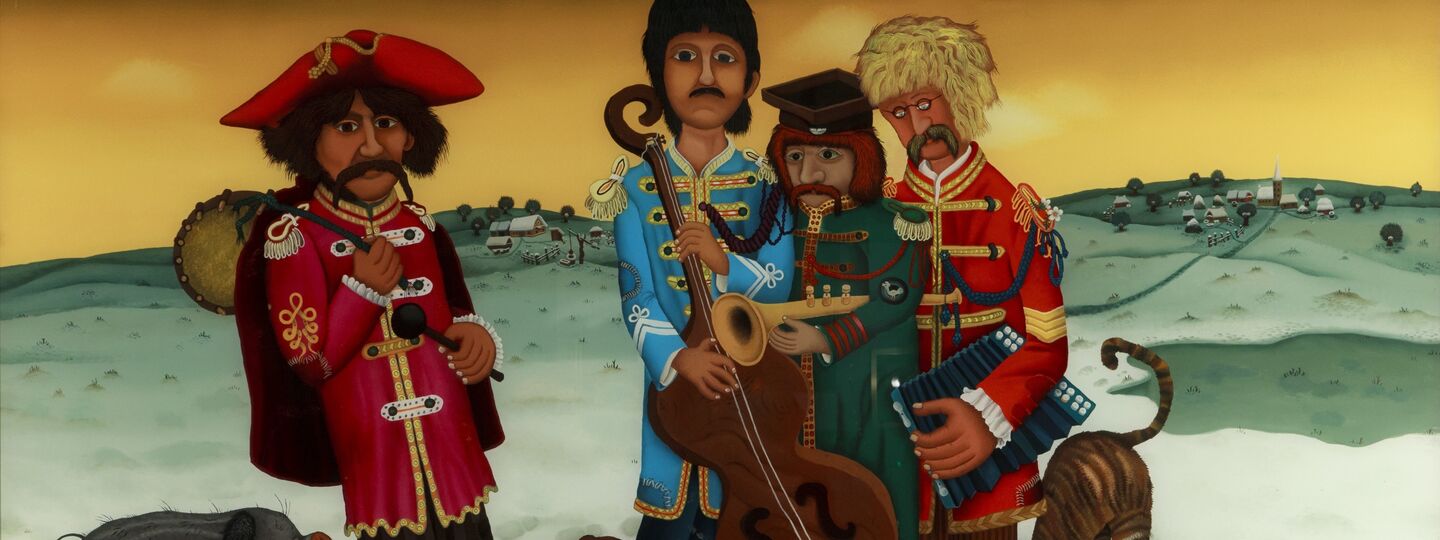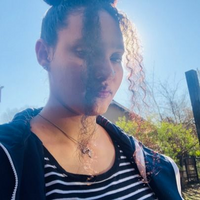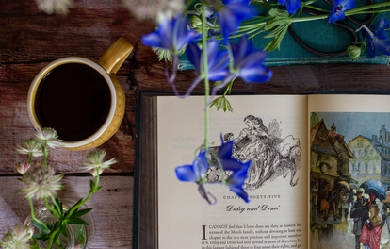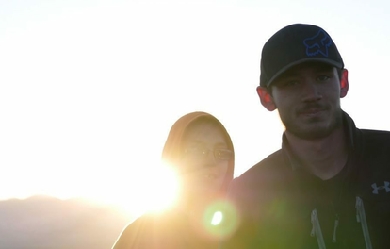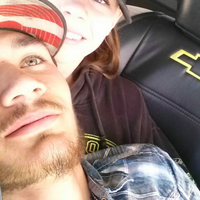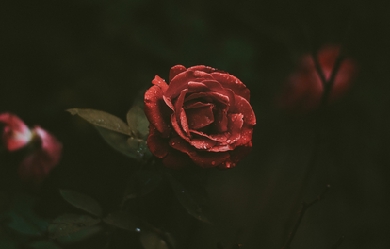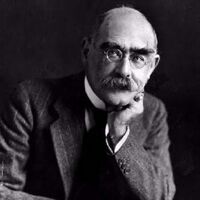
Joseph Rudyard Kipling (30 December 1865 – 18 January 1936) was an English novelist, short-story writer, poet, and journalist. He was born in British India, which inspired much of his work. Kipling was one of the most popular writers in England, in both prose and verse, in the late 19th and early 20th centuries. Henry James said: “Kipling strikes me personally as the most complete man of genius (as distinct from fine intelligence) that I have ever known.”
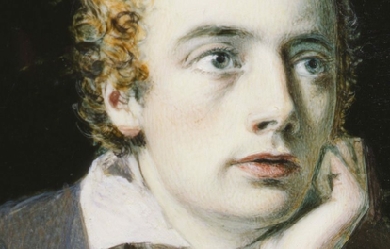
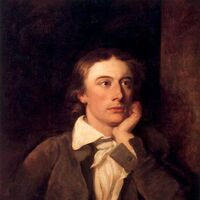
English Romantic poet John Keats was born on October 31, 1795, in London. The oldest of four children, he lost both his parents at a young age. His father, a livery-stable keeper, died when Keats was eight; his mother died of tuberculosis six years later. After his mother's death, Keats's maternal grandmother appointed two London merchants, Richard Abbey and John Rowland Sandell, as guardians. Abbey, a prosperous tea broker, assumed the bulk of this responsibility, while Sandell played only a minor role. When Keats was fifteen, Abbey withdrew him from the Clarke School, Enfield, to apprentice with an apothecary-surgeon and study medicine in a London hospital. In 1816 Keats became a licensed apothecary, but he never practiced his profession, deciding instead to write poetry.
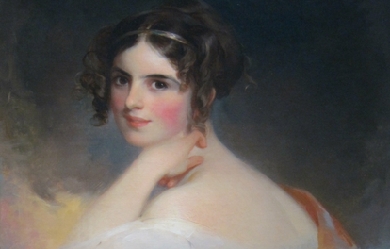
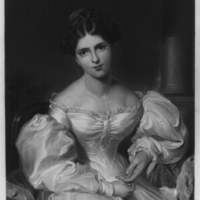
Frances Anne “Fanny” Kemble (27 November 1809– 15 January 1893) was a notable British actress from a theatre family in the early and mid-19th century. She was a well-known and popular writer, whose published works included plays, poetry, eleven volumes of memoirs, travel writing and works about the theatre.
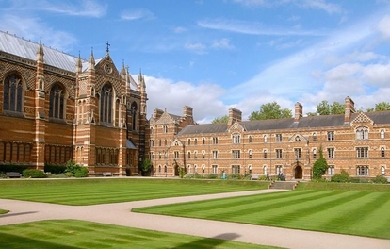
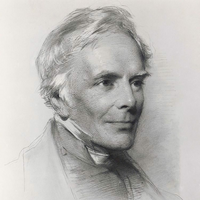
John Keble (25 April 1792– 29 March 1866) was an English churchman and poet, one of the leaders of the Oxford Movement. Keble College, Oxford was named after him. Life and writings Early life Keble was born in Fairford, Gloucestershire where his father, the Rev. John Keble, was Vicar of Coln St. Aldwyns. He attended Corpus Christi College, Oxford, and, after a brilliant academic performance there, became a Fellow of Oriel College, Oxford, and was for some years a tutor and examiner in the University. While still at Oxford he took Holy Orders in 1815, and became first a curate to his father, and later curate of St Michael and St Martin’s Church, Eastleach Martin in Gloucestershire. The Christian Year Meantime, he had been writing 'The Christian Year’, which appeared in 1827, and met with an almost unparalleled acceptance. Though at first anonymous, its authorship soon became known, with the result that Keble was in 1831 appointed to the Chair of Poetry at Oxford, which he held until 1841. Victorian scholar Michael Wheeler calls The Christian Year simply “the most popular volume of verse in the nineteenth century”. In his essay on Tractarian Aesthetics and the Romantic Tradition, Gregory Goodwin claims that The Christian Year is “Keble’s greatest contribution to the Oxford Movement and to English literature.” As evidence of that Goodwin cites E. B. Pusey’s report that ninety-five editions of this devotional text were printed during Keble’s lifetime, and “at the end of the year following his death, the number had arisen to a hundred-and-nine”. By the time the copyright expired in 1873, over 375,000 copies had been sold in Britain and 158 editions had been published. Notwithstanding its widespread appeal among the Victorian readers, the popularity of Keble’s The Christian Year faded in the twentieth century despite the familiarity of certain well-known hymns, e.g. “New every morning is the love.” Tractarianism and Vicar of Hursley In 1833 his famous Assize Sermon on “National Apostasy” gave the first impulse to the Oxford Movement, also known as the Tractarian movement. Along with his colleagues, including John Henry Newman and Edward Pusey, he became a leading light in the movement, but did not follow Newman into the Roman Catholic Church. In 1835 he was appointed Vicar of Hursley, Hampshire, where he settled down to family life and remained for the rest of his life as a parish priest at All Saints Church. He was a profound influence on a near neighbour, the author Charlotte Mary Yonge. Other writings In 1846 he published another book of poems, Lyra Innocentium. Other works were a Life of Wilson, Bishop of Sodor and Man, and an edition of the Works of Hooker. After his death appeared Letters of Spiritual Counsel, and 12 volumes of Parish Sermons. He also wrote hymns, such as “The Voice that Breathed o’er Eden” and Sun of our soul, Thou Saviour dear Biographies Two lives of Keble have been written, one by John Taylor Coleridge (1869), and the other by Rev. Walter Lock (1895). In 1963 Georgina Battiscombe wrote a biography titled John Keble: a Study in Limitations. Death Keble died in Bournemouth at the Hermitage Hotel, after visiting the area to try and recover from a long term illness as he believed the sea air had therapeutic qualities. He is buried in All Saints’ churchyard, Hursley. Legacy Keble’s feast day is kept on 14 July (the anniversary of his Assize Sermon) in the Church of England, and a commemoration observed on 29 March (the anniversary of his death) elsewhere in the Anglican Communion. Keble College, Oxford was founded in his memory. The view from Bulverton Hill, Sidmouth, is thought to have inspired 19th century poet and hymn writer John Keble to compose some of his best loved work, Keble’s Seat at Bulverton Hill is named after the English churchman and commands a panoramic view of the Lower Otter Valley and Dartmoor in the distance. He was a frequent visitor to Sidmouth and folklore suggests that Keble’s favourite spot was at Bulverton Hill where a wooden bench known as Keble’s Seat remains to this day. References Wikipedia—https://en.wikipedia.org/wiki/John_Keble

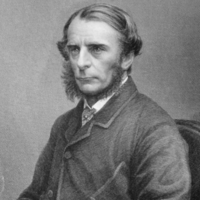
Charles Kingsley (12 June 1819– 23 January 1875) was a broad church priest of the Church of England, a university professor, historian and novelist. He is particularly associated with the West Country and northeast Hampshire. He was a friend and correspondent with Charles Darwin. Life and character Kingsley was born in Holne, Devon, the elder of two sons of the Reverend Charles Kingsley and his wife Mary Lucas Kingsley. His brother, Henry Kingsley, also became a novelist. He spent his childhood in Clovelly, Devon, where his father was Curate 1826–1832 and Rector 1832–1836, and at Barnack, Northamptonshire and was educated at Bristol Grammar School and Helston Grammar School before studying at King’s College London, and the University of Cambridge. Charles entered Magdalene College, Cambridge, in 1838, and graduated in 1842. He chose to pursue a ministry in the church. From 1844, he was rector of Eversley in Hampshire. In 1859 he was appointed chaplain to Queen Victoria. In 1860, he was appointed Regius Professor of Modern History at the University of Cambridge. In 1861 he became a private tutor to the Prince of Wales. In 1869 Kingsley resigned his Cambridge professorship and, from 1870 to 1873, was a canon of Chester Cathedral. While in Chester he founded the Chester Society for Natural Science, Literature and Art, which played an important part in the establishment of the Grosvenor Museum. In 1872 he accepted the Presidency of the Birmingham and Midland Institute and became its 19th President. In 1873 he was made a canon of Westminster Abbey. Kingsley died in 1875 and was buried in St Mary’s Churchyard in Eversley. Kingsley sat on the 1866 Edward Eyre Defence Committee along with Thomas Carlyle, John Ruskin, Charles Dickens and Alfred Lord Tennyson, where he supported Jamaican Governor Edward Eyre’s brutal suppression of the Morant Bay Rebellion against the Jamaica Committee. One of his daughters, Mary St Leger Kingsley, became known as a novelist under the pseudonym “Lucas Malet”. Kingsley’s life was written by his widow in 1877, entitled Charles Kingsley, his Letters and Memories of his Life. Kingsley also received letters from Thomas Huxley in 1860 and later in 1863, discussing Huxley’s early ideas on agnosticism. Influences and works Kingsley’s interest in history is shown in several of his writings, including The Heroes (1856), a children’s book about Greek mythology, and several historical novels, of which the best known are Hypatia (1853), Hereward the Wake (1865) and Westward Ho! (1855). He was sympathetic to the idea of evolution and was one of the first to welcome Charles Darwin’s book On the Origin of Species. He had been sent an advance review copy and in his response of 18 November 1859 (four days before the book went on sale) stated that he had “long since, from watching the crossing of domesticated animals and plants, learnt to disbelieve the dogma of the permanence of species.” Darwin added an edited version of Kingsley’s closing remarks to the next edition of his book, stating that “A celebrated author and divine has written to me that 'he has gradually learnt to see that it is just as noble a conception of the Deity to believe that He created a few original forms capable of self-development into other and needful forms, as to believe that He required a fresh act of creation to supply the voids caused by the action of His laws’.” When a heated dispute lasting three years developed over human evolution, Kingsley gently satirised the debate, known as the Great Hippocampus Question, as the “Great Hippopotamus Question”. Kingsley’s concern for social reform is illustrated in his classic, The Water-Babies, A Fairy Tale for a Land Baby (1863), a tale about a chimney sweep, which retained its popularity well into the 20th century. The story mentions the main protagonists in the scientific debate over human origins, rearranging his earlier satire as the “great hippopotamus test”. The book won a Lewis Carroll Shelf Award in 1963. His chief power as a novelist lay in his descriptive faculties. The descriptions of South American scenery in Westward Ho!, of the Egyptian desert in Hypatia, of the North Devon scenery in Two Years Ago, are brilliant; and the American scenery is even more vividly and more truthfully described when he had seen it only by the eye of his imagination than in his work At Last, which was written after he had visited the tropics. His sympathy with children taught him how to secure their interests. His version of the old Greek stories entitled The Heroes, and Water-babies and Madam How and Lady Why, in which he deals with popular natural history, take high rank among books for children. Kingsley was influenced by Frederick Denison Maurice, and was close to many Victorian thinkers and writers, including the Scottish writer George MacDonald. Kingsley was highly critical of Roman Catholicism and his argument, in print, with John Henry Newman, accusing him of untruthfulness and deceit, prompted the latter to write his Apologia Pro Vita Sua. Kingsley was racist towards the Irish and wrote in a letter to his wife from Ireland, 1860 "I am haunted by the human chimpanzees I saw along that hundred miles of horrible country [Ireland]...to see white chimpanzees is dreadful; if they were black one would not see it so much, but their skins, except where tanned by exposure, are as white as ours." Kingsley also wrote poetry and political articles, as well as several volumes of sermons. Kingsley coined the term pteridomania in his 1855 book Glaucus, or the Wonders of the Shore. Legacy Charles Kingsley’s novel Westward Ho! led to the founding of a village by the same name (the only place name in England with an exclamation mark) and inspired the construction of the Bideford, Westward Ho! and Appledore Railway. A hotel in Westward Ho! was named for and opened by him. A hotel opened in 1897 in Bloomsbury, London, was named after Kingsley. The hotel was founded by teetotallers who admired Kingsley for his political views and his ideas on social reform. It still exists and is now known as The Kingsley by Thistle. Bibliography * Yeast, a novel (1848) * Saint’s Tragedy, a drama * Alton Locke, a novel (1849) * Twenty-five Village Sermons (1849) * Cheap Clothes and Nasty (1850) * Phaeton, or Loose Thoughts for Loose Thinkers (1852) * Sermons on National Subjects (1st series, 1852) * Hypatia, a novel (1853) * Glaucus, or the Wonders of the Shore (1855) * Sermons on National Subjects (2nd series, 1854) * Alexandria and her Schools (I854) * Westward Ho!, a novel (1855) * Sermons for the Times (1855) * The Heroes, Greek fairy tales (1856) * Two Years Ago, a novel (1857) * Andromeda and other Poems (1858) * The Good News of God, sermons (1859) * Miscellanies (1859) * Limits of Exact Science applied to History (Inaugural lectures, 1860) * Town and Country Sermons (1861) * Sermons on the Pentateuch (1863) * The Water-Babies (1863) * The Roman and the Teuton (1864) * David and other Sermons (1866) * Hereward the Wake: “Last of the English”, a novel (London: Macmillan, 1866) * The Ancient Régime (Lectures at the Royal Institution, 1867) * Water of Life and other Sermons (1867) * The Hermits (1869) * Madam How and Lady Why (1869) * At Last: a Christmas in the West Indies (1871) * Town Geology (1872) * Discipline and other Sermons (1872) * Prose Idylls (1873) * Plays and Puritans (1873) * Health and Education (1874) * Westminster Sermons (1874) * Lectures delivered in America (1875) References Wikipedia—https://en.wikipedia.org/wiki/Charles_Kingsley
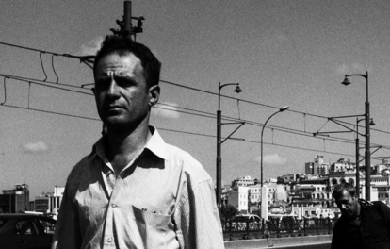
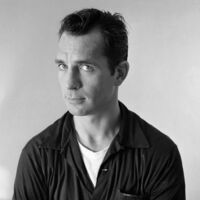
Born in Lowell, Massachusetts on March 12, 1922, Jack Kerouac was baptised Jean Louis Kirouac, the youngest of three children of French-Canadian immigrants from Quebec, Canada. He was raised speaking the French-Canadian working class dialect Joual until he learned English at age five. Kerouac studied at local Catholic public schools and the Horace Mann School in New York City, as well as Columbia University and The New School. He was awarded athletic scholarships to attend Boston College, Notre Dame and Columbia, though an injury during his freshman season at Columbia kept him from playing and eventually led to his dropping out of school. In 1942, Kerouac joined the United States Merchant Marine, and a year later joined the United States Navy—he served only eight days of active duty before being honorably discharged on psychiatric grounds. Soon after, Kerouac was involved as an accessory in the murder of David Kammerer, having helped his friend Lucien Carr dispose of evidence, and was arrested as a material witness. Unable to convince his father to pay for bail, Kerouac agreed to marry fellow writer Edie Parker, who supported him financially, and moved to Detroit, Michigan. Their marriage was quickly annulled due to infidelity, and Kerouac returned to New York in 1944. Upon Kerouac's return to New York, he lived with his parents in Queens, where he wrote his first novel, The Town and the City (1950). Through Lucien Carr, Kerouac had met many of the literary figures now associated with the Beat Generation, including Allen Ginsberg and William S. Burroughs, and in 1949 began his most famous literary work, On the Road, which was tentatively titled "The Beat Generation" and "Gone on the Road". Kerouac finished the largely autobiographical novel in April 1951, though it remained unpublished until 1957. During that time, Kerouac completed ten other autobiographical novels, including The Subterraneans, Doctor Sax, Tristessa, and Desolation Angels. In July of 1957, Kerouac moved to Orlando, Florida, while awaiting the release of On the Road (Viking Press) later that year. Soon after, the New York Times ran a review lauding Kerouac as the voice of a new generation. The success of the novel garnered Kerouac celebrity status as a major American author, and his friendship with Ginsberg, Burroughs, and Gregory Corso cemented the influence of what became known as the Beat Generation. Other poet friends of Kerouac include Philip Lamantia, Gary Snyder, Philip Whalen, Lawrence Ferlinghetti, Michael McClure, Bob Kaufman, Diane di Prima, Lew Welch, and Amiri Baraka. Though best known for his novels, Kerouac is also associated with poetry of the Beat movement, including spoken word. Kerouac wrote that he wanted "to be considered as a jazz poet blowing a long blues in an afternoon jazz session on Sunday." And in his "Statement on Poetics" for The New American Poetry, he asserts: "Add alluvials to the end of your line when all is exhausted but something has to be said for some specified irrational reason, since reason can never win out, because poetry is NOT a science. The rhythm of how you 'rush' yr statement determines the rhythm of the poem, whether it is a poem in verse-separated lines, or an endless one-line poem called prose . . ." In his introduction to Kerouac's Book of Blues, the poet Robert Creeley writes, "A complaint commonly lodged against Kerouac is that he was at best a self-taught 'natural,' at worst an example of the cul de sac the autodidact in the arts invariably comes to, a solipsistic 'world' of his own limitations and confusions." He goes on to state that Kerouac's poems themselves "provide an intensely vivid witness of both writer and time." Other books published later in Kerouac's career include The Dharma Bums and Big Sur. Jack Kerouac died from a chronic liver disease on October 21, 1969 at St. Anthony's Hospital in St. Petersburg, Florida, the result of a lifetime of heavy drinking. References Poets.org - http://www.poets.org/poet.php/prmPID/1016
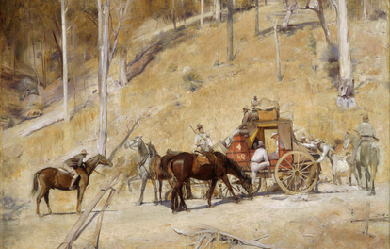
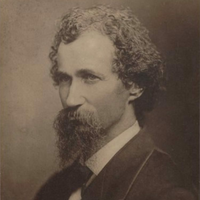
Thomas Henry Kendall (18 April 1839– 1 August 1882) was a nineteenth-century Australian author and bush poet, who was particularly known for his poems and tales set in a natural environment setting. Kendall was born in a settler’s hut by Yackungarrah Creek in Yatte Yattah near Ulladulla, New South Wales. He was registered as Thomas Henry Kendall, but never appears to have used his first name. His three volumes of verse were all published under the name of “Henry Kendall”. His father, Basil Kendall, was the son of the Rev. Thomas Kendall who came to Sydney in 1809 and five years later went as a missionary to New Zealand.


Passionately curious...astute observer of the psyche, the inner and outer world..with a love of all things beautiful...with a desire to liberate myself...I developed an interest in the Art/Literature/Music/Wonder of It All...in my early life...which has continued throughout my life journey, thus far, as I travelled from Poland through Germany to the spiritual land of Australia. I guess...the creative aspect of my personality has always been there. After spending much of my time being engaged as the Justice of the Peace (Statutory Office Holder), Medical Scientist and Bioethicist and...appreciative of every country's Art/Museums/Galleries/Literature...regardless of what human culture created the artistic secular/sacred works...I had considered developing further my own interest in oil painting and creative writing. That let me to embark on my new path of creative realization of my dreams. And for that gift, alone, I'm forever grateful. I'm deeply inspired by the mystery of life and a host of traditional, ancient included, writers/artists/poets...contributing greatly to the best creative works of our planet. It helps to; 1. be fluent in and experience another culture's linguistic/artistic insights; a different language is a different way to see life and our world and all art is autobiographical and saying something about the person creating it, 2. consider how human consciousness has changed over time...using human motivation as the most important raw source of a creative work and the irony as the gaiety of reflection and joy of wisdom, and 3. to choose in all things... *to be, rather than to seem. Acutely conscious of the transitory nature of my earthly joy...try to make the most of the gift of time... *Esse Quam Videri. - Cicero Poetry is like a dream of philosophic love. - Francis Bacon The knowledge of different literatures frees one from the tyranny of a few... - Jose Marti
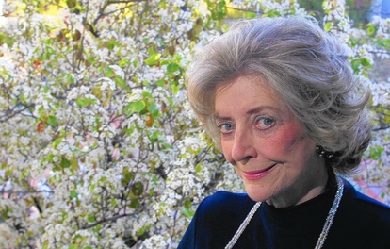
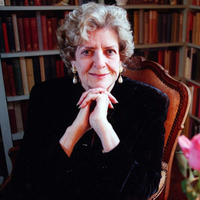
Carolyn Ashley Kizer (December 10, 1925– October 9, 2014) was an American poet of the Pacific Northwest whose works reflect her feminism. She won the Pulitzer Prize in 1985. According to an article at the Center for the Study of the Pacific Northwest, "Kizer reached into mythology in poems like “Semele Recycled”; into politics, into feminism, especially in her series of poems called “Pro Femina”; into science, the natural world, music, and translations and commentaries on Japanese and Chinese literatures".
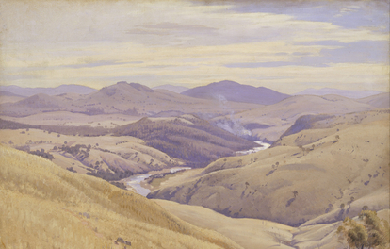
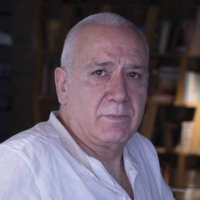
Alexis karpouzos was born in Athens on April 9, 1967, after attending philosophy and social studies courses at the Athens School of Philosophy and political science courses at the Athens Law School, he continued his studies in psychoanalysis and the psychology of learning. In 1998 founded the international center of learning, research and culture, a wisdom forum for studying issues of science and society in an integral way. He has been a visioner in the development of post-history sense of cosmic unity and the integral consciousness. The poetic thought of Alexis karpouzos is a expressions of soul's inner experiences, expression of universality. The inspiring visual images and the symbolic use of language offer a description of elevating experiences of consciousness, a glimpse of higher worlds. His philosophy speak to the human experience from a universal perspective, transcending all religions, cultural and national boundaries. Using vivid images and a direct language that speaks to the heart, his philosophy evokes a sense of deep communication with the collective unconscious, a sense of connection to all the creatures of the world, compassion for others, admiration for the beauty of nature, reverence for all life, and an abiding faith in the invisible touch of world. Alexis karpouzos thoughts are often terse and paradoxical, challenging us to to break out of the box of limiting beliefs and see things from a new perspective. Above all, Alexis karpouzos continually calls to us to wake up and explore the mysteries within our own selves, i.e. the mysteries of universe.
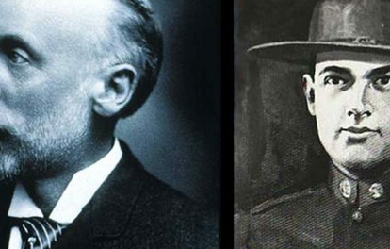
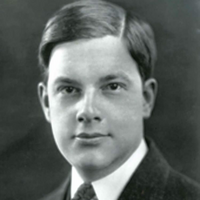
Joyce Kilmer (born as Alfred Joyce Kilmer; December 6, 1886– July 30, 1918) was an American writer and poet mainly remembered for a short poem titled “Trees” (1913), which was published in the collection Trees and Other Poems in 1914. Though a prolific poet whose works celebrated the common beauty of the natural world as well as his Roman Catholic religious faith, Kilmer was also a journalist, literary critic, lecturer, and editor. While most of his works are largely unknown, a select few of his poems remain popular and are published frequently in anthologies. Several critics—including both Kilmer’s contemporaries and modern scholars—have disparaged Kilmer’s work as being too simple and overly sentimental, and suggested that his style was far too traditional, even archaic. Many writers, including notably Ogden Nash, have parodied Kilmer’s work and style—as attested by the many parodies of “Trees”. At the time of his deployment to Europe during World War I, Kilmer was considered the leading American Roman Catholic poet and lecturer of his generation, whom critics often compared to British contemporaries G. K. Chesterton (1874–1936) and Hilaire Belloc (1870–1953). He enlisted in the New York National Guard and was deployed to France with the 69th Infantry Regiment (the famous "Fighting 69th") in 1917. He was killed by a sniper’s bullet at the Second Battle of the Marne in 1918 at the age of 31. He was married to Aline Murray, also an accomplished poet and author, with whom he had five children. Biography Early years and education: 1886–1908 Kilmer was born December 6, 1886 in New Brunswick, New Jersey, the fourth and youngest child, of Annie Ellen Kilburn (1849–1932), a minor writer and composer, and Dr. Frederick Barnett Kilmer (1851–1934), a physician and analytical chemist employed by the Johnson and Johnson Company and inventor of the company’s baby powder. He was named Alfred Joyce Kilmer after two priests at Christ Church in New Brunswick: Alfred R. Taylor, the curate; and the Rev. Dr. Elisha Brooks Joyce (1857–1926), the rector. Christ Church is the oldest Episcopal parish in New Brunswick and the Kilmer family were parishioners. Rector Joyce, who served the parish from 1883 to 1916, baptised the young Kilmer, who remained an Episcopalian until his 1913 conversion to Catholicism. Kilmer’s birthplace in New Brunswick, where the Kilmer family lived from 1886 to 1892, is still standing, and houses a small museum to Kilmer, as well as a few Middlesex County government offices. Kilmer entered Rutgers College Grammar School (now Rutgers Preparatory School) in 1895 at the age of 8. During his years at the Grammar School, Kilmer was editor-in-chief of the school’s paper, the Argo, and loved the classics but had difficulty with Greek. He won the first Lane Classical Prize, for oratory, and obtained a scholarship to Rutgers College which he would attend the following year. Despite his difficulties with Greek and mathematics, he stood at the head of his class in preparatory school. After graduating from Rutgers College Grammar School in 1904, he continued his education at Rutgers College (now Rutgers University) from 1904 to 1906. At Rutgers, Kilmer was associate editor of the Targum, the campus newspaper, and a member of the Delta Upsilon fraternity. However, he was unable to complete the curriculum’s rigorous mathematics requirement and was asked to repeat his sophomore year. Under pressure from his mother, Kilmer transferred to Columbia University in New York City. At Columbia, Kilmer was vice-president of the Philolexian Society (a literary society), associate editor of Columbia Spectator (the campus newspaper), and member of the Debating Union. He completed his Bachelor of Arts (A.B.) degree and graduated from Columbia on May 23, 1908. Shortly after graduation, on June 9, 1908, he married Aline Murray (1888–1941), a fellow poet to whom he had been engaged since his sophomore year at Rutgers. The Kilmers had five children: Kenton Sinclair Kilmer (1909–1995); Michael Barry Kilmer (1916–1927); Deborah ("Sister Michael") Clanton Kilmer (1914–1999) who was a Catholic nun at the Saint Benedict’s Monastery; Rose Kilburn Kilmer (1912–1917); and Christopher Kilmer (1917–1984). Years of writing and faith: 1909–1917 In the autumn of 1908, Kilmer was employed teaching Latin at Morristown High School in Morristown, New Jersey. At this time, he began to submit essays to Red Cross Notes (including his first published piece, an essay on the “Psychology of Advertising”) and his early poems to literary periodicals. Kilmer also wrote book reviews for The Literary Digest, Town & Country, The Nation, and The New York Times. By June 1909, Kilmer had abandoned any aspirations to continue teaching and relocated to New York City, where he focused solely on developing a career as a writer. From 1909 to 1912, Kilmer was employed by Funk and Wagnalls, which was preparing an edition of The Standard Dictionary that would be published in 1912. According to Hillis, Kilmer’s job “was to define ordinary words assigned to him at five cents for each word defined. This was a job at which one would ordinarily earn ten to twelve dollars a week, but Kilmer attacked the task with such vigor and speed that it was soon thought wisest to put him on a regular salary.” In 1911, Kilmer’s first book of verse was published, entitled Summer of Love. Kilmer would later write that “...some of the poems in it, those inspired by genuine love, are not things of which to be ashamed, and you, understanding, would not be offended by the others.” In 1912, Kilmer became a special writer for the New York Times Review of Books and the New York Times Sunday Magazine and was often engaged in lecturing. He moved to Mahwah, New Jersey, where he resided until his service and death in World War I. By this time he had become established as a published poet and as a popular lecturer. According to Robert Holliday, Kilmer “frequently neglected to make any preparation for his speeches, not even choosing a subject until the beginning of the dinner which was to culminate in a specimen of his oratory. His constant research for the dictionary, and, later on, for his New York Times articles, must have given him a store of knowledge at his fingertips to be produced at a moment’s notice for these emergencies.” When the Kilmers’ daughter Rose (1912–1917) was stricken with poliomyelitis (also known as infantile paralysis) shortly after birth, they turned to their religious faith for comfort. A series of correspondence between Kilmer and Father James J. Daly led the Kilmers to convert to Roman Catholicism, and they were received in the church in 1913. In one of these letters Kilmer writes that he “believed in the Catholic position, the Catholic view of ethics and aesthetics, for a long time,” and he “wanted something not intellectual, some conviction not mental– in fact I wanted Faith.” Kilmer would stop “every morning for months” on his way “to the office and prayed for faith,” claiming that when “faith did come, it came, I think, by way of my little paralyzed daughter. Her lifeless hands led me; I think her tiny feet know beautiful paths. You understand this and it gives me a selfish pleasure to write it down.” With the publication of “Trees” in the magazine Poetry in August 1913, Kilmer gained immense popularity as a poet across the United States. He had established himself as a successful lecturer—particularly one seeking to reach a Catholic audience. His close friend and editor Robert Holliday wrote that it “is not an unsupported assertion to say that he was in his time and place the laureate of the Catholic Church.” Trees and Other Poems (1914) was published the following year. Over the next few years, Kilmer was prolific in his output, managing an intense schedule of lectures, publishing a large number of essays and literary criticism, and writing poetry. In 1915 he became poetry editor of Current Literature and contributing editor of Warner’s Library of the World’s Best Literature. In 1916 and 1917, before the American entry into World War I, Kilmer would publish four books: The Circus and Other Essays (1916), a series of interviews with literary personages entitled Literature in the Making (1917), Main Street and Other Poems (1917), and Dreams and Images: An Anthology of Catholic Poets (1917). War years: 1917–1918 In April 1917, a few days after the United States entered World War I, Kilmer enlisted in the Seventh Regiment of the New York National Guard. In August, Kilmer was assigned as a statistician with the U.S. 69th Infantry Regiment (better known as the "Fighting 69th" and later re-designated the 165th Infantry Regiment), of the 42nd “Rainbow” Division, and quickly rose to the rank of sergeant. Though he was eligible for commission as an officer and often recommended for such posts during the course of the war, Kilmer refused, stating that he would rather be a sergeant in the Fighting 69th than an officer in any other regiment. Shortly before his deployment to Europe, the Kilmers’ daughter Rose had died, and twelve days later, their son Christopher was born. Before his departure, Kilmer had contracted with publishers to write a book about the war, deciding upon the title Here and There with the Fighting Sixty-Ninth. The regiment arrived in France in November 1917, and Kilmer wrote to his wife that he had not written “anything in prose or verse since I got here—except statistics—but I’ve stored up a lot of memories to turn into copy when I get a chance.” Kilmer did not write such a book; however, toward the end of the year, he did find time to write prose sketches and poetry. The most notable of his poems during this period was “Rouge Bouquet” (1918) which commemorated the deaths of two dozen members of his regiment in a German artillery barrage on American trench positions in the Rouge Bouquet forest north-east of the French village of Baccarat. At the time, this was a relatively quiet sector of the front, but the first battalion was struck by a German heavy artillery bombardment on the afternoon of March 7, 1918 that buried 21 men of the unit, killing 19 (of which 14 remained entombed). Kilmer sought more hazardous duty and was transferred to the military intelligence section of his regiment, in April 1918. In a letter to his wife, Aline, he remarked: “Now I’m doing work I love– and work you may be proud of. None of the drudgery of soldiering, but a double share of glory and thrills.” According to Hillis, Kilmer’s fellow soldiers had accorded him much respect for his battlefield demeanour—"He was worshipped by the men about him. I have heard them speak with awe of his coolness and his nerve in scouting patrols in no man’s land. This coolness and his habit of choosing, with typical enthusiasm, the most dangerous and difficult missions, led to his death.” Death and burial During the Second Battle of Marne there was heavy fighting throughout the last days of July 1918. On July 30, 1918, Kilmer volunteered to accompany Major William “Wild Bill” Donovan (later, in World War II, the founder of the Office of Strategic Services, forerunner to the Central Intelligence Agency) when Donovan’s battalion (1–165th Infantry) was sent to lead the day’s attack. During the course of the day, Kilmer led a scouting party to find the position of a German machine gun. When his comrades found him, some time later, they thought at first that he was peering over the edge of a little hill, where he had crawled for a better view. When he did not answer their call, they ran to him and found him dead. According to Father Francis P. Duffy: “A bullet had pierced his brain. His body was carried in and buried by the side of Ames. God rest his dear and gallant soul.” A sniper’s bullet likely killed him immediately. According to military records, Kilmer died on the battlefield near Muercy Farm, beside the Ourcq River near the village of Seringes-et-Nesles, in France, on July 30, 1918 at the age of 31. For his valor, Kilmer was posthumously awarded the Croix de Guerre (War Cross) by the French Republic. Kilmer was buried in the Oise-Aisne American Cemetery and Memorial, near Fere-en-Tardenois, Aisne, Picardy, France. A cenotaph erected to his memory is located on the Kilmer family plot in Elmwood Cemetery, in New Brunswick, New Jersey. A Memorial Mass was celebrated at St. Patrick’s Cathedral in Manhattan on October 14, 1918. Criticism and influence “Trees” Joyce Kilmer’s reputation as a poet is staked largely on the widespread popularity of one poem—"Trees" (1913). It was first published in the August 1913 issue of Poetry: A Magazine of Verse which had begun publishing the year before in Chicago, Illinois and was included as the title poem in a collection of poems Trees and Other Poems (1914). According to Kilmer’s oldest son, Kenton, the poem was written on February 2, 1913 when the family resided in Mahwah, New Jersey. It was written in the afternoon in the intervals of some other writing. The desk was in an upstairs room, by a window looking down a wooded hill. It was written in a little notebook in which his father and mother wrote out copies of several of their poems, and, in most cases, added the date of composition. On one page the first two lines of 'Trees’ appear, with the date, February 2, 1913, and on another page, further on in the book, is the full text of the poem. It was dedicated to his wife’s mother, Mrs. Henry Mills Alden, who was endeared to all her family. Many locations including Rutgers University (where Kilmer attended for two years), University of Notre Dame, as well as historians in Mahwah, New Jersey and in other places, have boasted that a specific tree was the inspiration for Kilmer’s poem. However, Kenton Kilmer refutes these claims, remarking that, Mother and I agreed, when we talked about it, that Dad never meant his poem to apply to one particular tree, or to the trees of any special region. Just any trees or all trees that might be rained on or snowed on, and that would be suitable nesting places for robins. I guess they’d have to have upward-reaching branches, too, for the line about ‘lifting leafy arms to pray.’ Rule out weeping willows.” The popular appeal of this simple poem is likely the source of its endurance despite the continuing negative opinion of the poem’s merits from scholars and critics. According to Robert Holliday, Kilmer’s friend and editor, “Trees” speaks “with authentic song to the simplest of hearts” and that “(t)he exquisite title poem now so universally known, made his reputation more than all the rest he had written put together. That impeccable lyric which made for immediate widespread popularity.” Its popularity has also led to parodies of the poem—some by noted poets and writers. The pattern of its first lines (I think that I shall never see / A poem lovely as a tree.) is of seemingly simple rhyme and meter and easy to mimic along with the poem’s choice of metaphors. One of the best known parodies is “Song of the Open Road” by American humorist and poet Ogden Nash (1902–1971): I think that I shall never see A billboard lovely as a tree. Indeed, unless the billboards fall, I’ll never see a tree at all. Influences upon Kilmer’s verse Kilmer’s early works were inspired by, and were imitative of, the poetry of Algernon Charles Swinburne, Gerard Manley Hopkins, Ernest Dowson, Aubrey Beardsley, and William Butler Yeats (and the Celtic Revival). It was later through the influence of works by Coventry Patmore, Francis Thompson, and those of Alice Meynell and her children Viola Meynell and Francis Meynell, that Kilmer seems to have become interested in Catholicism. Kilmer wrote of his influences: I have come to regard them with intense admiration. Patmore seems to me to be a greater poet than Francis Thompson. He has not the rich vocabulary, the decorative erudition, the Shelleyan enthusiasm, which distinguish the Sister Songs and the Hound of Heaven, but he has a classical simplicity, a restraint and sincerity which make his poems satisfying. Because he was initially raised Episcopalian (or Anglican), Kilmer became literary editor of the Anglican weekly, The Churchman, before his conversion to Catholicism. During this time he did considerable research into 16th and 17th century Anglican poets as well as metaphysical, or mystic poets of that time, including George Herbert, Thomas Traherne, Robert Herrick, Bishop Coxe, and Robert Stephen Hawker (the eccentric vicar of the Church of Saint Morwenna and Saint John the Baptist at Morwenstow in Cornwall)—the latter whom he referred to as “a coast life-guard in a cassock.” These poets also had an influence on Kilmer’s writings. Critics compared Kilmer to British Catholic writers Hilaire Belloc and G. K. Chesterton—suggesting that his reputation might have risen to the level where he would have been considered their American counterpart if not for his untimely death. Criticism of Kilmer’s work Kilmer’s death at age 31 removed from him the opportunity to develop into a more mature poet. Because “Trees” is often dismissed by modern critics and scholars as simple verse, much of Kilmer’s work (especially his literary criticism) has slipped into obscurity. Only a very few of his poems have appeared in anthologies, and with the exception of “Trees”—and to a much lesser extent “Rouge Bouquet” (1917–1918)—almost none have obtained lasting widespread popularity. The entire corpus of Kilmer’s work was produced between 1909 and 1918 when Romanticism and sentimental lyric poetry fell out of favor and Modernism took root—especially with the influence of the Lost Generation. In the years after Kilmer’s death, poetry went in drastically different directions, as is seen especially in the work of T. S. Eliot and Ezra Pound. Kilmer’s verse is conservative and traditional, and does not break the formal rules of poetics—he can be considered as one of the last poets of the Romantic era. His style has been criticized for not breaking free of traditional modes of rhyme, meter, and theme, and for being too sentimental to be taken seriously. Works * 1911: Summer of Love (poetry) * 1914: Trees and Other Poems (poetry) * 1916: The Circus and Other Essays (essays) * 1917: Main Street and Other Poems. (poetry) * 1917: The Courage of Enlightenment: An address delivered in Campion College, Prairie du Chien, Wisconsin, to the members of the graduating class, June 15, 1917. * 1917: Dreams and Images: An Anthology of Catholic Poets. (poetry anthology, edited by Kilmer) * 1917: Literature in the Making by some of its Makers (criticism) * 1918: Poems, Essays and Letters in Two Volumes Volume One: Memoir and Poems, Volume Two: prose works (collected works) (published posthumously, edited by Robert Cortes Holliday). * 1919: Kilmer’s unfinished history of the Fighting 69th (165th Infantry) is posthumously printed in Father Duffy’s Story by Francis P. Duffy (New York: Doran, 1919). * 1921: The Circus and Other Essays and Fugitive Pieces (published posthumously) References Wikipedia—https://en.wikipedia.org/wiki/Joyce_Kilmer
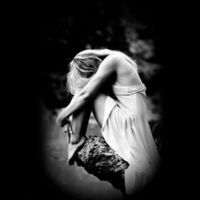
I grew up in Fort McDowell, Arizona, 1998 I love to write and I sometimes wish that I was meant to write freely and express my feelings I feel. Through the years that I been alive life has been a struggle, but when is it not. Through the suffering in my life writing has just been my cure to everything and it just has been my key to life ever since I was a little girl and I may not have had the family or parent setting but I got through and I survived my roller coasters and struggles in life. Poetry is really the only thing i have now in life that I know that is right, right now.
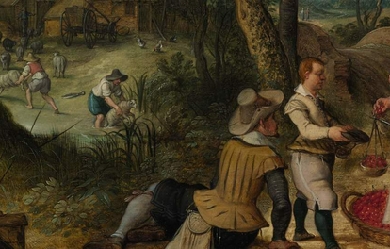
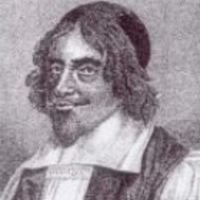
Henry King (1592– 30 September 1669) was an English poet and bishop. Life The older son of John King, Bishop of London, and his wife Joan Freeman, he was baptised at Worminghall, Buckinghamshire, 16 January 1592. He was educated at Lord Williams’s School, Westminster School and in 1608 became a student of Christ Church, Oxford. With his brother John King he matriculated 20 January 1609, and was admitted (19 June 1611 and 7 July 1614) to the degrees of bachelor and master of arts. On 24 January 1616 he was collated to the prebend of St. Pancras in St. Paul’s Cathedral, receiving at the same time the office of penitentiary or confessor in the cathedral, together with the rectory and patronage of Chigwell, Essex. He was made archdeacon of Colchester on 10 April 1617, and soon afterwards received the sinecure rectory of Fulham, in addition to being appointed one of the royal chaplains. All these preferments he held until he was advanced to the episcopal bench. Late in 1617 he preached a sermon at Paul’s Cross. About this time King married Anne, eldest daughter of Robert Berkeley, esq., and granddaughter of Sir Maurice Berkeley. There were four or five children of the marriage, but only two survived. His wife died about 1624, and was buried in St. Paul’s Cathedral, aged just 23. He was a close friend of John Donne, who made him one of his executors, and presented him with his sermons in manuscript, and notes from his reading on over 1400 authors. Other friends were Ben Jonson, George Sandys, Sir Henry Blount, and James Howell. His friendship with Izaak Walton began about 1634, and was lifelong. After his father’s death, on Good Friday 1621, a rumour circulated that he had died in communion with the church of Rome. This was the subject of a two pamphlets attributed to Richard Broughton and George Musket. King preached a sermon refuting this claim on 25 November 1621. He was made canon of Christ Church 3 March 1624, and his brother John was made canon in the following August. On 19 May 1625 they were admitted to the degrees of B.D. and D.D. On 6 February 1639 he was made dean of Rochester, and on 6 February 1642, the day after the House of Lords had passed the bill to deprive the bishops of their votes, he became Bishop of Chichester; he was also presented to the rectory of Petworth in Sussex. He was residing at his episcopal palace when Chichester surrendered to the parliament in 1643, and his library was seized. He was deprived of the rectory of Petworth, which was given by parliament to Francis Cheynell, and by a resolution of the House of Commons, 27 June 1643, his estates were ordered to be sequestrated. From 1643 to 1651 he lived in the house of his brother-in-law, Sir Richard Hobart of Langley, Buckinghamshire. Shortly afterwards King retired to Ritchings, near Langley, the residence of Lady Anne Salter (supposed to be the sister of Brian Duppa, where other members of the King family and John Hales of Eton found refuge. In 1659 King was engaged in negotiations for supplying the vacant bishoprics, and was reinstated at the Restoration, returning to Chichester. On 20 May 1661 he preached at Whitehall, and on 24 April 1662 he delivered an impressive funeral sermon on Bishop Duppa at Westminster Abbey. King died at Chichester 30 September 1669, and was buried in Chichester Cathedral, where the widow of his son John erected a monument to his memory and that of her husband. His second son, Henry, died 21 February 1669; his eldest son, John, died 10 March 1671. Works * King wrote many elegies on royal persons and on his private friends, who included John Donne and Ben Jonson. A selection from his Poems and Psalms was published in 1843. References Wikipedia—https://en.wikipedia.org/wiki/Henry_King_(poet)

my name shaqueria and poetry is my life i write all the time . its a way of expressing myself and my inner feelings i mostly write about reality and the real world like things thats goes on in life. really looking forward to making this writing my carreer, i write songs lyrics books and poetry of course im a nice outgoing person and my life is bascally in my poetry I dont really know how to speak or explain how i feel inless im putting it in words, my writing is my life i started when i was 10 i use to always rap and sing bt poetry found its way to my heart and stayed there i like reading other people poetry to see if there words could relate to mind. i was scared for the longest to put anything i wrote up because i thought people would judge me and i want get no where but to be judges put you in the right spot and actually open up your opp. because someone out there would like what you can created. i found out you would be rejected by some but it could also change someones life by my story and im hoping to. ill like you yall would leave some feedback on my poems tell me whats right whats wrong and how yall feel about what i have writing ..........THANK YOUU
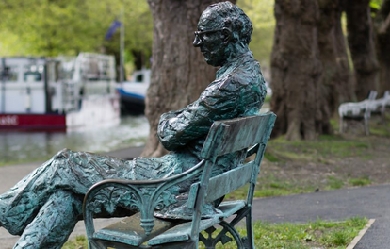
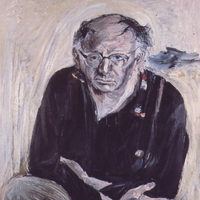
Patrick Kavanagh (21 October 1904– 30 November 1967) was an Irish poet and novelist. His best-known works include the novel Tarry Flynn, and the poems “On Raglan Road” and “The Great Hunger”. He is known for his accounts of Irish life through reference to the everyday and commonplace. Life and work Early life Patrick Kavanagh was born in rural Inniskeen, County Monaghan, in 1904, the fourth of the ten children of Bridget Quinn. His grandfather was a schoolteacher called “Keaveney”, which a local priest changed to “Kavanagh”. The grandfather had to leave the area following a scandal and never taught in a national school again. Patrick Kavanagh’s father, James, was a shoemaker and farmer. Kavanagh’s brother Peter became a university professor and writer, two of their sisters were teachers, three became nurses, and one became a nun. Patrick Kavanagh was a pupil at Kednaminsha National School from 1909 to 1916, leaving in the sixth year at the age of 13. He became apprenticed to his father as a shoemaker and worked on his farm. He was also goalkeeper for the Inniskeen Gaelic football team. He later reflected: “Although the literal idea of the peasant is of a farm labouring person, in fact a peasant is all that mass of mankind which lives below a certain level of consciousness. They live in the dark cave of the unconscious and they scream when they see the light.” He also commented that, although he had grown up in a poor district, "the real poverty was lack of enlightenment [and] I am afraid this fog of unknowing affected me dreadfully.” Writing career Kavanagh’s first published work appeared in 1928 in the Dundalk Democrat and the Irish Independent. Kavanagh had encountered a copy of the Irish Statesman, edited by George William Russell, who published under the pen name AE and was a leader of the Irish Literary Revival. Russell at first rejected Kavanagh’s work but encouraged him to keep submitting, and he went on to publish verse by Kavanagh in 1929 and 1930. This inspired the farmer to leave home and attempt to further his aspirations. In 1931, he walked 80 kilometres to meet Russell in Dublin, where Kavanagh’s brother was a teacher. Russell gave Kavanagh books, among them works by Feodor Dostoyevsky, Victor Hugo, Walt Whitman, Ralph Waldo Emerson and Robert Browning, and became Kavanagh’s literary adviser. Kavanagh joined Dundalk Library and the first book he borrowed was The Waste Land by T. S. Eliot. Kavanagh’s first collection, Ploughman and Other Poems, was published in 1936. It is notable for its realistic portrayal of Irish country life, free of the romantic sentiment often seen at the time in rural poems, a trait he abhorred. Published by Macmillan in its series on new poets, the book expressed a commitment to colloquial speech and the unvarnished lives of real people, which made him unpopular with the literary establishment. Two years after his first collection was published he had yet to make a significant impression. The Times Literary Supplement described him as “a young Irish poet of promise rather than of achievement,” and The Spectator commented that, “like other poets admired by A.E., he writes much better prose than poetry. Mr Kavanagh’s lyrics are for the most part slight and conventional, easily enjoyed but almost as easily forgotten.” In 1938 Kavanagh went to London. He remained there for about five months. The Green Fool, a loosely autobiographical novel, was published in 1938 and Kavanagh was accused of libel. Oliver St. John Gogarty sued Kavanagh for his description of his first visit to Gogarty’s home: “I mistook Gogarty’s white-robed maid for his wife or his mistress; I expected every poet to have a spare wife.” Gogarty, who had taken offence at the close coupling of the words “wife” and “mistress”, was awarded £100 in damages. The book, which recounted Kavanagh’s rural childhood and his attempts to become a writer, received international recognition and good reviews. In 1939 Kavanagh settled in Dublin. In his biography John Nemo describes Kavanagh’s encounter with the city’s literary world: “he realized that the stimulating environment he had imagined was little different from the petty and ignorant world he had left. He soon saw through the literary masks many Dublin writers wore to affect an air of artistic sophistication. To him such men were dandies, journalists, and civil servants playing at art. His disgust was deepened by the fact that he was treated as the literate peasant he had been rather than as the highly talented poet he believed he was in the process of becoming”. In 1942 he published his long poem The Great Hunger, which describes the privations and hardship of the rural life he knew well. Although it was rumoured at the time that all copies of Horizon, the literary magazine in which it was published, were seized by the Garda Síochána, Kavanagh denied that this had occurred, saying later that he was visited by two Gardaí at his home (probably in connection with an investigation of Horizon under the Special Powers Act). Written from the viewpoint of a single peasant against the historical background of famine and emotional despair, the poem is often held by critics to be Kavanagh’s finest work. It set out to counter the saccharine romanticising of the Irish literary establishment in its view of peasant life. Richard Murphy in the The New York Times Book Review described it as “a great work” and Robin Skelton in Poetry praised it as “a vision of mythic intensity”. Kavanagh worked as a part-time journalist, writing a gossip column in the Irish Press under the pseudonym Piers Plowman from 1942 to 1944 and acted as film critic for the same publication from 1945 to 1949. In 1946 the Archbishop of Dublin, John Charles McQuaid, found Kavanagh a job on the Catholic magazine The Standard. McQuaid continued to support him throughout his life. Tarry Flynn, a semi-autobiographical novel, was published in 1948 and was banned for a time. It is a fictional account of rural life. It was later made into a play, performed at the Abbey Theatre in 1966. In late 1946 Kavanagh moved to Belfast, where he worked as a journalist and as a barman in a number of public houses in the Falls Road area. During this period he lodged in the Beechmount area in a house where he was related to the tenant through the tenant’s brother-in-law in Ballymackney, County Monaghan. Before returning to Dublin in November 1949 he presented numerous manuscripts to the family, all of which are now believed to be in Spain. Kavanagh’s personality became progressively quixotic as his drinking increased over the years and his health deteriorated. Eventually, a dishevelled figure, he moved among the bars of Dublin, drinking whiskey, and displaying his predilection for turning on benefactors and friends. Later career In 1949 Kavanagh began to write a monthly “Diary” for Envoy, a literary publication founded by John Ryan, who became a lifelong friend and benefactor. The Envoy’s offices were at 39 Grafton Street, but most of the journal’s business was conducted in a nearby pub, McDaid’s, which Kavanagh subsequently adopted as his local. Through Envoy he came into contact with a circle of young artists and intellectuals including Anthony Cronin, Patrick Swift, John Jordan and the sculptor Desmond MacNamara, whose bust of Kavanagh is in the Irish National Writers Museum. Kavanagh often referred to these times as the period of his “poetic rebirth”. In 1952 Kavanagh published his own journal, Kavanagh’s Weekly: A Journal of Literature and Politics, in conjunction with, and financed by, his brother Peter. It ran to some 13 issues, from 12 April to 5 July 1952. The Leader lawsuit and lung cancer In 1954 two major events changed Kavanagh’s life. First, he sued The Leader for publishing a portrait of him as an alcoholic sponger. The highly skilled lawyer John A. Costello, acting in defence of The Leader, won the case when it came to trial. (Costello had been Attorney General of Ireland (1926–1932) and later became Taoiseach (1948–1951 and 1954–1957). He and Kavanagh eventually became good friends.) Second, shortly after Kavanagh lost this case, he was diagnosed with lung cancer and was admitted to hospital, where he had a lung removed. It was while recovering from this operation by relaxing on the banks of the Grand Canal in Dublin that Kavanagh rediscovered his poetic vision. He began to appreciate nature and his surroundings, and took his inspiration from them for many of his later poems. Turning point: Kavanagh begins to receive acclaim In 1955 Macmillan’s rejected a typescript of poems by Kavanagh, which left the poet very depressed. Patrick Swift, on a visit to Dublin in 1956, was invited by Kavanagh to look at the typescript. Swift then arranged for the poems to be published in the English literary journal Nimbus(19 poems were published). This proved a turning point and Kavanagh began receiving the acclaim that he had always felt he deserved. His next collection, Come Dance with Kitty Stobling, was directly linked to the mini-collection in Nimbus. Between 1959 and 1962 Kavanagh spent more time in London, where he contributed to Swift’s X magazine. During this period Kavanagh occasionally stayed with the Swifts in Westbourne Terrace. He gave lectures at University College Dublin and in the United States, represented Ireland at literary symposiums, and became a judge of the Guinness Poetry Awards. In London he often stayed with his publisher, Martin Green, and Green’s wife Fiona, in their house in Tottenham Street, Fitzrovia. It was at this time that Martin Green produced Kavanagh’s Collected Poems (1964) with prompting from Patrick Swift and Anthony Cronin". In the introduction Kavanagh wrote: “A man innocently dabbles in words and rhymes, and finds that it is his life.” Marriage and death Kavanagh married his long-term companion Katherine Barry Moloney (niece of Kevin Barry) in April 1967 and they set up home together on the Waterloo Road in Dublin. Kavanagh fell ill at the first performance of Tarry Flynn by the Abbey Theatre company in Dundalk Town Hall and died a few days later, on 30 November 1967, in a Dublin nursing home. His grave is in Inniskeen adjoining the Patrick Kavanagh Centre. His wife Katherine died in 1989; she is also buried there. Legacy Nobel Laureate Seamus Heaney is acknowledged to have been influenced by Kavanagh. Heaney was introduced to Kavanagh’s work by the writer Michael MacLaverty when they taught together at St Thomas’s, Belfast. Heaney and Kavanagh shares a belief in the capacity of the local, or parochial, to reveal the universal. Heaney once said that Kavanagh’s poetry “had a transformative effect on the general culture and liberated the gifts of the poetic generations who came after him.” Heaney noted: “Kavanagh is a truly representative modern figure in that his subversiveness was turned upon himself: dissatisfaction, both spiritual and artistic, is what inspired his growth.... His instruction and example helped us to see an essential difference between what he called the parochial and provincial mentalities”. As Kavanagh put it: “All great civilizations are based on the parish”. He concludes that Kavanagh’s poetry vindicates his “indomitable faith in himself and in the art that made him so much more than himself”. The actor Russell Crowe has stated that he is a fan of Kavanagh. He commented: “I like the clarity and the emotiveness of Kavanagh. I like how he combines the kind of mystic into really clear, evocative work that can make you glad you are alive”. On 24 February 2002, after winning the BAFTA Award for Best Actor in a Leading Role for his performance in A Beautiful Mind, Crowe quoted Kavanagh during his acceptance speech at the 55th British Academy Film Awards. When he became aware that the Kavanagh quote had been cut from the final broadcast, Crowe became aggressive with the BBC producer responsible, Malcolm Gerrie. He said: “it was about a one minute fifty speech but they’ve cut a minute out of it”. The poem that was cut was a four-line poem: When the Irish Times compiled a list of favourite Irish poems in 2000, ten of Kavanagh’s poems were in the top 50, and he was rated the second favourite poet behind W. B. Yeats. Kavanagh’s poem “On Raglan Road”, set to the traditional air “Fáinne Geal an Lae”, composed by Thomas Connellan in the 17th century, has been performed by numerous artists as diverse as Van Morrison, Luke Kelly, Dire Straits, Billy Bragg, Sinéad O’Connor, Joan Osborne and many others. There is a statue of Kavanagh beside Dublin’s Grand Canal, inspired by his poem “Lines written on a Seat on the Grand Canal, Dublin”: Every 17 March, after the St Patrick’s day parade, a group of Kavanagh’s friends gather at the Kavanagh seat on the banks of the Grand Canal at Mespil road in his honour. The seat was erected by his friends, led by John Ryan and Denis Dwyer, in 1968. A bronze sculpture of the writer stands outside the Palace Bar on Dublin’s Fleet Street. There is also a statue of Patrick Kavanagh located outside the Irish pub and restaurant, Raglan Road, at Walt Disney World’s Downtown Disney in Orlando, Florida. His poetic tribute to his friend the Irish American sculptor Jerome Connor was used in the plaque overlooking Dublin’s Phoenix Park dedicated to Connor. The Patrick Kavanagh Poetry Award is presented each year for an unpublished collection of poems. The annual Patrick Kavanagh Weekend takes place on the last weekend in September in Inniskeen, County Monaghan, Ireland. The Patrick Kavanagh Centre, an interpretative centre set up to commemorate the poet, is located in Inniskeen. Kavanagh Archive In 1986, Peter Kavanagh negotiated the sale of Patrick Kavanagh’s papers as well as a large collection of his own work devoted to the late poet to University College Dublin. The purchase was enabled by a public appeal for funds by the late Professor Gus Martin. He included in the sale his original hand press which he had built. The archive is housed in a special collections room in UCD’s library, and the hand press is on loan to the Patrick Kavanagh Centre, Inniskeen. The contents include: Early literary material containing verses, novels, prose writing and other publications; family correspondence containing letters to Cecilia Kavanagh and Peter Kavanagh; letters to Patrick Kavanagh from various sources (1926–40). Later literary material containing verses, novels, articles, lectures, published works, galley page proofs, Kavanagh’s Weekly, and adaptations of Kavanagh’s work (1940–67). Documents concerning libel case of Kavanagh v The Leader (1952–54). Personal correspondence, including with his sisters, Peter Kavanagh, Katherine Barry Moloney (1947–67). Printed material, press cuttings, publications, personal memorabilia, and tape recordings (1940–67). Peter Kavanagh’s papers include thesis, plays, autobiographical writing, and printed material, personal and general correspondence memorabilia, tape recordings, galley proofs (1941–82) and family memorabilia (1872–1967). Copyright Ownership of the copyright is vested in Trustees of The Patrick and Katherine Kavanagh Trust by virtue of the terms of the will of the late Kathleen Kavanagh, widow of the poet, who in turn became entitled to the copyright on the death of her husband. The proceeds of the trust are used to support deserving writers. The Trustees are Leland Bardwell, Patrick MacEntee, Eiléan Ní Chuilleanáin, Eunan O’Halpin, and Macdara Woods. This was disputed by the late Peter Kavanagh who continued publishing his work after Patrick’s death. This dispute led some books to go out of print. Most of his work is now available in the UK and Ireland but the status in the United States is more uncertain. Works Poetry * 1936– Ploughman and Other Poems * 1942– The Great Hunger * 1947– A Soul For Sale * 1958– Recent Poems * 1960– Come Dance with Kitty Stobling and Other Poems * 1964– Collected Poems (ISBN 0 85616 100 4) * 1972– The Complete Poems of Patrick Kavanagh, edited by Peter Kavanagh * 1978– Lough Derg * 1996– Selected Poems, edited by Antoinette Quinn (ISBN 0140184856) * 2004– Collected Poems, edited by Antoinette Quinn (ISBN 0-713-99599-8) Prose * 1938– The Green Fool * 1948– Tarry Flynn (ISBN 0141183616) * 1964– Self Portrait– recording * 1967– Collected Prose * 1971– November Haggard a collection of prose and poetry edited by Peter Kavanagh * 1978– By Night Unstarred. A conflated novel, completed by Peter Kavanagh * 2002– A Poet’s Country: Selected Prose, edited by Antoinette Quinn (ISBN 1843510103) Dramatisations * 1966– Tarry Flynn, adapted by P. J. O’Connor * 1986– The Great Hunger, adapted by Tom Mac Intyre * 1992– Out of That Childhood Country John McArdle’s (1992), co-written with his brother Tommy and Eugene MacCabe, is about Kavanagh’s youth loosely based on his writings. * 1997– Tarry Flynn, adapted by Conall Morrison (modern dance and play) * 2004– The Green Fool, adapted by Upstate Theatre Project References Wikipedia—https://en.wikipedia.org/wiki/Patrick_Kavanagh
When bad people are caught or found out for doing bad things, people in positions of power are given the job of discipline or punishment. To the bad'ns, the PEOPLE in authority are scary/frightening. The people in authority are to be feared. In my life, no, my life is, the fear I have learned to have. This fear I am telling of is not of any man. This fear is of something much greater. This fear is of a power that is as clear as air to me now and as sure as the sun. This fear is not of anything you may know about. This fear is, simply put, my approach to everything in this world. There is an old book that is also a very good book which states a truth that you can bet your life on. If you like treasure hunts, check out Proverbs 1:7 when you have a Bible handy. Winkey Face. And to quote lil wayne's eyeballs, "Fear God"
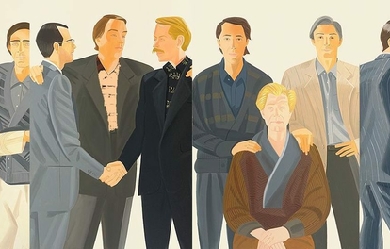
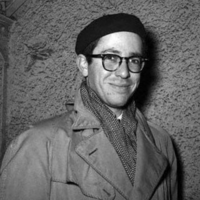
Kenneth Koch (27 February 1925– 6 July 2002) was an American poet, playwright, and professor, active from the 1950s until his death at age 77. He was a prominent poet of the New York School of poetry, a loose group of poets including Frank O’Hara and John Ashbery that eschewed contemporary introspective poetry in favor of an exuberant, cosmopolitan style that drew major inspiration from travel, painting, and music. Life Koch (pronounced coke) was born Jay Kenneth Koch in Cincinnati, Ohio. He began writing poetry at an early age, discovering the work of Shelley and Keats in his teenage years. At the age of 18, he served in WWII as a U.S. Army infantryman in the Philippines. After his service, he attended Harvard University, where he met future New York School poet John Ashbery. After graduating from Harvard in 1948, and moving to New York City, Koch studied for and received his Ph.D. from Columbia University. In 1951 he met his first wife, Janice Elwood, at UC Berkeley; they married in 1954 and lived in France and Italy for over a year. Their daughter, Katherine, was born in Rome in 1955. In 1959 he joined the faculty in the Department of English and Comparative Literature at Columbia, and he taught classes at Columbia for over forty years. His first wife died in 1981; Koch married his second wife, Karen Culler, in 1994. He was inducted into the American Academy of Arts and Letters in 1996. Koch died from a year-long battle with leukemia in 2002. Career While a student at Harvard, Koch won the prestigious Glascock Prize in 1948. In 1962, Koch was writer in residence at the New York City Writer’s Conference at Wagner College. The 1960s saw his first published books of poetry, but his poetry did not garner wider popular acclaim until the 1970s with his book The Art of Love: Poems (1975). He continued writing poetry and releasing books of poetry up until his death. Koch won the Bollingen Prize for One Train (1994) and On The Great Atlantic Rainway: Selected Poems 1950-1988 (1994), followed closely by the Phi Beta Kappa Poetry Award winner New Addresses (2000). In 1970, Koch released a pioneering book in poetry education, Wishes, Lies and Dreams: Teaching Children To Write Poetry. Over the next 30 years, he followed this book with other books and anthologies on poetry education tailored to teaching poetry appreciation and composition to children, adults, and the elderly. Koch wrote hundreds of avant-garde plays over the course of his 50-year career, highlighted by drama collections like 1000 Avant-Garde Plays (1988), which only contains 116 plays, many of them only one scene or a few minutes in length. His prose work is highlighted by The Red Robins (1975), a sprawling novel about a group of fighter pilots flying for personal freedom under the leadership of Santa Claus. He also published a book of short stories, Hotel Lambosa (1988), loosely based on and inspired by his world travels. He also produced at least one libretto, and several of his poems have been set to music by composers. Koch taught poetry at Columbia University, where his classes were popular. His wild humor and intense teaching style, often punctuated by unusual physicality (standing on a table to shout lines by Walt Whitman) and outbursts of vocal performance often drawn from Italian opera, drew non-English majors and alumni. Some of the spirit of these lectures is contained in his final book on poetry education, Making Your Own Days (1998). His students included poets Ron Padgett, David Shapiro, Frank Lima, Alan Feldman, David Lehman, Jordan Davis, Jessy Randall, David Baratier, Loren Goodman and Carson Cistulli. His poems were translated into German by the poet Nicolas Born in 1973 for the renowned “red-frame-series” of the Rowohlt Verlag. Koch had a brush with the anarchist affinity group Up Against the Wall Motherfuckers in early January 1968. During a poetry reading at St. Mark’s Church, a member of the group walked in and pointed a handgun at the podium, shouting “Koch!” before firing one blank round. The poet regained his composure and said to the “shooter,” “Grow up.” Poetry Koch asked in his poem Fresh Air (1956) why poets were writing about dull subjects with dull forms. Modern poetry was solemn, boring, and uneventful. Koch described poems “Written by the men with their eyes on the myth/ And the missus and the midterms...” He attacked the idea that poetry should be in any way stale. Koch wrote of how: The Waste Land gave the time’s most accurate data, It seemed, and Eliot was the Great Dictator Of literature. One hardly dared to wink Or fool around in any way in poems, And critics poured out awful jereboams To irony, ambiguity, and tension— And other things I do not wish to mention. (Excerpt from ‘'Seasons on Earth’,’ 1987) Though not against T. S. Eliot, Koch opposed the idea that in order to write poetry one had to be depressed or think that the world is a terrible place. His ideas were developed with close friends Frank O’Hara and John Ashbery, along with painters Jane Freilicher and Larry Rivers, among others. He once remarked that “Maybe you can almost characterize the poetry of the New York School as having as one of its main subjects the fullness and richness of life and the richness of possibility and excitement and happiness.” In his poem The Art of Poetry (1975) Koch offered guidelines to writing good poetry. Among his 10 suggestions are “1) Is it astonishing?” and “10) Would I be happy to go to Heaven with this pinned on to my angelic jacket as an entrance show? Oh would I?” Koch once remarked that “Children have a natural talent for writing poetry and anyone who teaches them should know that.” In his poems: He mixed word usage with various levels of imagery; He set two contrasting tones next to each other, simplicity and silliness at the same time; He spoke to everything, animate and inanimate objects; He used parody of other poets to express his own views, both serious and comic. Koch was labeled by some as just a comedic poet. He acknowledged this in an interview and offered his comments: He gives a picture of this in “To Kidding Around,” where the joys of being a joker are proclaimed: To be rid of troubles Of one person by turning into Someone else, moving and jolting As if nothing mattered but today In fact nothing But this precise moment... (Excerpt from To Kidding Around, 2000) Theater Koch collaborated with the composer Ned Rorem on an opera, Bertha, which received its premier in 1973. His short play, George Washington Crossing the Delaware, was produced in 1962. Numerous others of his plays have been produced. Selected works * Poems (1953) * Ko: or, A Season on Earth (1959) * Permanently (1961) * Thank You and Other Poems (1962) * Bertha, & other plays (1966) * Poems from 1952 and 1953 (1968) * The Pleasures of Peace and Other Poems (1969) * Sleeping with Women (1969) * When the Sun Tries to Go On (1969) * The Art of Love (1975) * The Duplications (1977) * The Burning Mystery of Anna in 1951 (1979) * From the Air (1979) * Days and Nights (1982) * On the Edge (1986) * Seasons on Earth (1987) * On the Great Atlantic Rainway: Selected Poems 1950–1988 (1994) * One Train (1994) * Straits (1998) * New Addresses (2000) * A Possible World (2002) References Wikipedia—https://en.wikipedia.org/wiki/Kenneth_Koch

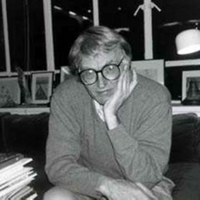
William Kilborn Knott (17 February 1940– 12 March 2014) was an American poet. Life Born in Carson City, Michigan, US, Knott received his MFA from Norwich University and studied with John Logan in Chicago. His first collection of poems, The Naomi Poems: Corpse and Beans, was published in 1968 under the name Saint Geraud, a fictional persona whose backstory included a suicide two years prior to the publishing. The Naomi Poems was well received and brought him to the attention of such poets as James Wright, who called him an “unmistakable genius.” Knott taught at Emerson College for more than 25 years, published many books of poetry, and was awarded the Iowa Poetry Prize and a Guggenheim fellowship. Work Early in his career, Knott was noted for writing unusually short poems, some as short as one line, and untitled. Later he became interested in metrical verse forms and syllabics. He was not a believer in poetic “branding” and throughout his career refused to restrict himself to one particular school or style of writing. His poetry’s subjects, themes and tones were also wide-ranging. His work often displayed a wry, self-deprecating sense of humor, and he was critical of what he saw as an epidemic of humorlessness in contemporary American poetry. Poets who cite him as an influence include Thomas Lux, Mary Karr, Stephen Dobyns, Denise Duhamel, and Denis Johnson. One of Johnson’s novels, Already Dead: A California Gothic, was inspired by Knott’s “Poem Noir.” Knott was also a visual artist, known for giving away booklets of his poetry with hand-painted covers. Bibliography * Books published by Bill Knott include: * The Naomi Poems: Book One: Corpse and Beans (1968), Follett, under the pseudonym 'St. Geraud’ * Aurealism: A Study (1969), Salt Mound Press. (chapbook) * Auto-Necrophilia; The _____ Poems, Book 2 (1971), Big Table Pub., ISBN 0-695-80188-0 * Nights of Naomi (1972), Big Table (chapbook) * Love Poems to Myself (1974), Barn Dream Press, Boston, OCLC 3709433 (chapbook) * Rome in Rome (1976), Release Press. * Selected and Collected Poems (1977), SUN * Becos (1983), Random House, ISBN 0-394-52924-3 * Outremer (1989), University of Iowa Press, ISBN 0-87745-255-5 * Poems 1963-1988 (1989), University of Pittsburgh Press, ISBN 0-8229-5416-8 * Collected Political Poems 1965-1993 (1993) Self-published chapbook * Sixty Poems of Love and Homage (1994) Self-published chapbook * The Quicken Tree (1995), Boa Editions, Hardcover ISBN 1-880238-24-1 Softcover ISBN 1-880238-25-X * Laugh at the End of the World: Collected Comic Poems 1969-1999 (2000), Boa Editions, ISBN 1-880238-84-5 * The Unsubscriber (2004), Farrar, Straus and Giroux, ISBN 0-374-53014-9 * Stigmata Errata Etcetera (2007), Saturnalia Books, ISBN 978-0-9754990-4-7 * He also collaborated on a novel with James Tate, Lucky Darryl (Release Press, 1977). ISBN 978-0913722107 References Wikipedia—https://en.wikipedia.org/wiki/Bill_Knott_(poet)
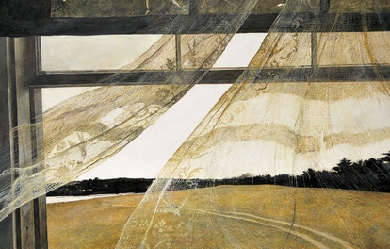
Theodore J. Kooser (born 25 April 1939) is an American poet born in Ames, Iowa, on April 25, 1939. He won the Pulitzer Prize in Poetry in 2005. He served as Poet Laureate Consultant in Poetry to the Library of Congress from 2004 to 2006. Kooser was one of the first poets laureate selected from the Great Plains, and is known for his conversational style of poetry.
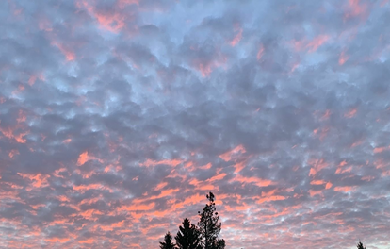

Throughout the years, the reasoning behind my writing has changed. Maybe it was a broken heart, a bad experience, falling in love or out of touch, finding myself, getting lost, escaping the crazy world we live in. Whatever the reason, writing is my solace. It’s the one place I can be completely at one with myself, where I am harmonious and comfortable with the ugly truths being human. I aim to paint the minds of others the way my experiences have painted mine, and hopefully share in my words the feelings I so deeply feel immersed in. Welcome to my world.
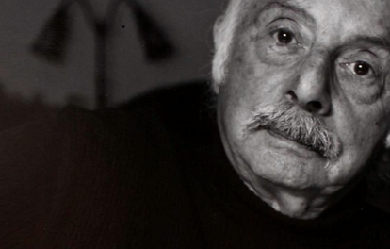

Stanley Jasspon Kunitz (July 29, 1905 – May 14, 2006) was an American poet. He was appointed Poet Laureate Consultant in Poetry to the Library of Congress twice, first in 1974 and then again in 2000. Biography Kunitz was born in Worcester, Massachusetts, the youngest of three children, to Yetta Helen (née Jasspon) and Solomon Z. Kunitz, both of Jewish Russian Lithuanian descent.His father, a dressmaker of Russian Jewish heritage, committed suicide in a public park six weeks before Stanley was born. After going bankrupt, he went to Elm Park in Worcester, and drank carbolic acid. His mother removed every trace of Kunitz’s father from the household. The death of his father would be a powerful influence of his life.Kunitz and his two older sisters, Sarah and Sophia, were raised by his mother, who had made her way from Yashwen, Kovno, Lithuania by herself in 1890, and opened a dry goods store. Yetta remarried to Mark Dine in 1912. Yetta and Mark filed for bankruptcy in 1912 and then were indicted by the U.S. District Court for concealing assets. They pleaded guilty and turned over USD$10,500 to the trustees. Mark Dine died when Kunitz was fourteen, when, while hanging curtains, he suffered a heart attack.At fifteen, Kunitz moved out of the house and became a butcher’s assistant. Later he got a job as a cub reporter on The Worcester Telegram, where he would continue working during his summer vacations from college.Kunitz graduated summa cum laude in 1926 from Harvard College with an English major and a philosophy minor, and then earned a master’s degree in English from Harvard the following year. He wanted to continue his studies for a doctorate degree, but was told by the university that the Anglo-Saxon students would not like to be taught by a Jew.After Harvard, he worked as a reporter for The Worcester Telegram, and as editor for the H. W. Wilson Company in New York City. He then founded and edited Wilson Library Bulletin and started the Author Biographical Studies. Kunitz married Helen Pearce in 1930; they divorced in 1937. In 1935 he moved to New Hope, Pennsylvania and befriended Theodore Roethke. He married Eleanor Evans in 1939; they had a daughter Gretchen in 1950. Kunitz divorced Eleanor in 1958.At Wilson Company, Kunitz served as co-editor for Twentieth Century Authors, among other reference works. In 1931, as Dilly Tante, he edited Living Authors, a Book of Biographies. His poems began to appear in Poetry, Commonweal, The New Republic, The Nation, and The Dial. During World War II, he was drafted into the Army in 1943 as a conscientious objector, and after undergoing basic training three times, served as a noncombatant at Gravely Point, Washington in the Air Transport Command in charge of information and education. He refused a commission and was discharged with the rank of staff sergeant.After the war, he began a peripatetic teaching career at Bennington College (1946–1949; taking over from his friend Roethke). He subsequently taught at the State University of New York at Potsdam (then the New York State Teachers College at Potsdam) as a full professor (1949-1950; summer sessions through 1954), the New School for Social Research (lecturer; 1950-1957), the University of Washington (visiting professor; 1955-1956), Queens College (visiting professor; 1956-1957), Brandeis University (poet-in-residence; 1958-1959) and Columbia University (lecturer in the School of General Studies; 1963-1966) before spending 18 years as an adjunct professor of writing at Columbia’s School of the Arts (1967-1985). Throughout this period, he also held visiting appointments at Yale University (1970), Rutgers University–Camden (1974), Princeton University (1978) and Vassar College (1981).After his divorce from Eleanor, he married the painter and poet Elise Asher in 1958. His marriage to Asher led to friendships with artists like Philip Guston and Mark Rothko.Kunitz’s poetry won wide praise for its profundity and quality. He was the New York State Poet Laureate from 1987 to 1989. He continued to write and publish until his centenary year, as late as 2005. Many consider that his poetry’s symbolism is influenced significantly by the work of Carl Jung. Kunitz influenced many 20th-century poets, including James Wright, Mark Doty, Louise Glück, Joan Hutton Landis, and Carolyn Kizer. For most of his life, Kunitz divided his time between New York City and Provincetown, Massachusetts. He enjoyed gardening and maintained one of the most impressive seaside gardens in Provincetown. There he also founded Fine Arts Work Center, where he was a mainstay of the literary community, as he was of Poets House in Manhattan. He was awarded the Peace Abbey Courage of Conscience award in Sherborn, Massachusetts in October 1998 for his contribution to the liberation of the human spirit through his poetry.He died in 2006 at his home in Manhattan. He had previously come close to death, and reflected on the experience in his last book, a collection of essays, The Wild Braid: A Poet Reflects on a Century in the Garden. Poetry Kunitz’s first collection of poems, Intellectual Things, was published in 1930. His second volume of poems, Passport to the War, was published fourteen years later; the book went largely unnoticed, although it featured some of Kunitz’s best-known poems, and soon fell out of print. Kunitz’s confidence was not in the best of shape when, in 1959, he had trouble finding a publisher for his third book, Selected Poems: 1928-1958. Despite this unflattering experience, the book, eventually published by Little Brown, received the Pulitzer Prize for Poetry. His next volume of poems would not appear until 1971, but Kunitz remained busy through the 1960s editing reference books and translating Russian poets. When twelve years later The Testing Tree appeared, Kunitz’s style was radically transformed from the highly intellectual and philosophical musings of his earlier work to more deeply personal yet disciplined narratives; moreover, his lines shifted from iambic pentameter to a freer prosody based on instinct and breath—usually resulting in shorter stressed lines of three or four beats. Throughout the 70s and 80s, he became one of the most treasured and distinctive voices in American poetry. His collection Passing Through: The Later Poems won the National Book Award for Poetry in 1995. Kunitz received many other honors, including a National Medal of Arts, the Bollingen Prize for a lifetime achievement in poetry, the Robert Frost Medal, and Harvard’s Centennial Medal. He served two terms as Consultant on Poetry for the Library of Congress (the precursor title to Poet Laureate), one term as Poet Laureate of the United States, and one term as the State Poet of New York. He founded the Fine Arts Work Center in Provincetown, Massachusetts, and Poets House in New York City. Kunitz also acted as a judge for the Yale Series of Younger Poets Competition. Library Bill of Rights Kunitz served as editor of the Wilson Library Bulletin from 1928 to 1943. An outspoken critic of censorship, in his capacity as editor, he targeted his criticism at librarians who did not actively oppose it. He published an article in 1938 by Bernard Berelson entitled “The Myth of Library Impartiality”. This article led Forrest Spaulding and the Des Moines Public Library to draft the Library Bill of Rights, which was later adopted by the American Library Association and continues to serve as the cornerstone document on intellectual freedom in libraries. Awards and honors * 2006 L.L. Winship/PEN New England Award, The Wild Braid: A Poet Reflects on a Century in the Garden Bibliography * * Poetry * The Wild Braid: A Poet Reflects on a Century in the Garden (2005) * The Collected Poems of Stanley Kunitz (NY: W. W. Norton & Company, 2000) * Passing Through, The Later Poems, New and Selected (NY: W. W. Norton & Company, 1995)—winner of the National Book Award * Next-to-Last Things: New Poems and Essays (1985) * The Wellfleet Whale and Companion Poems * The Terrible Threshold * The Coat without a Seam * The Poems of Stanley Kunitz (1928–1978) (1978) * The Testing-Tree (1971) * Selected Poems, 1928-1958 (1958) * Passport to the War (1944) * Intellectual Things (1930)Other writing and interviews: * Conversations with Stanley Kunitz (Jackson, MS: University Press of Mississippi, Literary Conversations Series, 11/2013), Edited by Kent P. Ljungquist * A Kind of Order, A Kind of Folly: Essays and Conversations’ * Interviews and Encounters with Stanley Kunitz (Riverdale-on-Hudson, NY: The Sheep Meadow Press, 1995), Edited by Stanley MossAs editor, translator, or co-translator: * The Essential Blake * Orchard Lamps by Ivan Drach * Story under full sail by Andrei Voznesensky * Poems of John Keats * Poems of Akhmatova by Max Hayward References Wikipedia—https://en.wikipedia.org/wiki/Stanley_Kunitz


